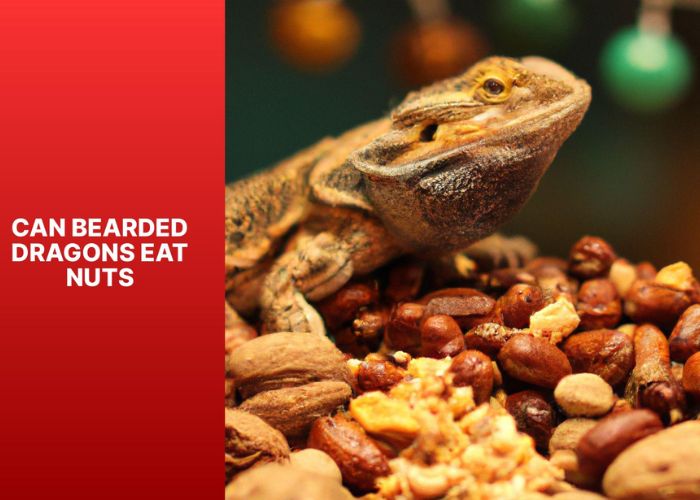Are nats a safe food for bearded dragons? Hairy winged serpents are fascinating pets due of their unusual look and amiability. As responsible pet owners, you understand the significance of providing your canines with a variety diet. A common concern among those who wish to provide a home for mythical creatures without beards is whether or not hairy-winged serpents can subsist on gnats. Are those gnats? Provide an explanation for them. How thick would they say the supplement is? Can you tell me the benefits and drawbacks of giving these to a bearded dragon? The following is an answer to the subject of whether nats are okay to feed to bearded dragons. Let’s read below “Can Bearded Dragons Eat Nats”.
Understanding the Bearded Dragon Diet:
Fantastical, spiky serpent Learning About Food: A First-Timer’s Guide A bearded dragon’s food can change a lot. When they’re free to roam, their diet consists of all sorts of tiny creatures, bugs, and plants. How well pets adhere to this expanded meal schedule determines how well they do. To ensure proper growth, energy, and health, bearded dragons must have a well-rounded diet.
Primary components of a bearded dragon’s diet include:
- Insects: Bugs Some of the most sought-after insects are phoenix worms, mealworms, superworms, crickets, and Dubia bugs.
- Vegetables: Some additional fantastic vegetable choices include carrots, red peppers, squash, and dark greens such as kale or collards.
- Fruits: Sometimes, you can fill in the blanks with little natural goods like strawberries, mango, blueberries, and other fruits.
- Supplements: Maintaining strength areas and preventing shortages requires taking nutritional and calcium supplements.
Below, we shall talk about the advantages of tending to gnats for an unshaven winged serpent.
Gnats as a Potential Food Source: Can Bearded Dragons Eat Nats
Little flying bugs called gnats are actually members of the Diptera order. Many people who possess fabled serpents with whiskers question if these little bugs, which are typically seen outdoors, would be a suitable addition to their pet’s food.
Nutritional Value of Gnats:
Gnats are essential to the diet of bearded dragons due to the high protein content they contain. Gaining muscle, strengthening weak areas, and reaching new heights all require a protein-rich diet. Insects, such as gnats, can supply the amino acids that a plant-only diet may lack. In addition, they contain a wealth of vitamins and minerals that are essential for the health of your whiskered snake.
Potential Benefits of Including Gnats:
- Variety in Diet: By feeding your mythical beast a variety of bugs, you may keep it strong throughout its life.
- Enrichment: To prevent your pet from becoming bored with its regular meal, you can enrich its diet by giving it various kinds of prey, like gnats. Proceeding with this will be easier with this.
- Natural Instincts: Bondage involves caring for little flying insects, such gnats, to mimic the regular hunting habit of unshaven mythical monsters.
- High-Protein Content: In order to give unshaven legendary serpents the protein they need for strong growth and active play, gnats are a great choice.
Considerations Before Feeding Gnats:
Bearded dragon gnats are an excellent protein source for pets, but there are a few things to keep in mind while feeding them:
- Source and Hygiene: It is important to buy insects, especially gnats, from a trustworthy vendor who does not use pesticides. Proper hygiene will be ensured by this. Bugs caught in the wild may be dangerous for your pet since they may contain pesticides and other dangerous substances.
- Size Matters: Gnats and other tiny insects are fair game for adult bearded dragons, but the proportion of prey to dragon size is crucial. An bug as small as a hair can sting a teenage scaly snake.
- Frequency: Gnats are fantastic as a supplement to a healthy diet, but you shouldn’t rely on them as a main source of nutrition. Keeping their care unbalanced could cause them to develop unhealthy imbalanced tendencies, therefore moderation is crucial.
- Gut Loading: Inadequate bug support causes gastric stacking, which you can prevent by taking good care of your hairy legendary beast. Prey that has been stomach stacked has a higher nutritional value.
- Potential Risks of Feeding Gnats: While gnats can supplement the diet of a whiskery winged serpent, there are some considerations to bear in mind before introducing them to your pet:
- Pesticide Exposure: A serious worry is the potential for whiskery legendary serpents to be exposed to synthetics in their natural habitat through insects.
- Choking Hazard: Because of the potential for choking, it is important to only purchase insects from reputable, regulated merchants.
- Allergies: Whiskery legendary serpents are prone to gnat allergies because of their tiny stature. To prevent choking, you should constantly supervise your pet as they eat.
Legendary serpents without beards could be insect-allergic as well. Any change in your legendary serpent’s behaviour, extreme lethargy, or superficial relaxation could be an indication of concern, so remain vigilant.
Conclusion:
As a last point, gnats can be a healthy snack for well-cared-for mythical furry creatures. To ensure the bugs are safe for your pet, get them from a trustworthy seller, give them the right amount at the right times, and regularly monitor them for any negative reactions.It is my sincere wish that “Can Bearded Dragons Eat Nats?” brings you delight.







